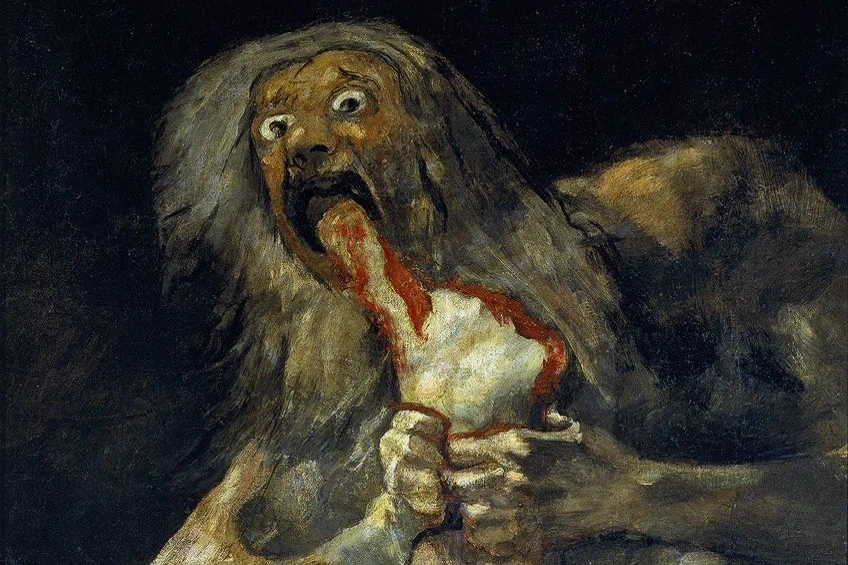Famous Scary Paintings – Explore Art’s Most Creepy Paintings
As a species, we humans tend to be rather curious, especially about things that shock and confuse us. For this reason, we are often drawn to the macabre. Some of the most celebrated artists have explored their morbid fascination through art. Take a look at some of the most famous scary paintings by artists we all know and love.
A Brief Introduction to Scary Art
Humans love being scared. This is clear from the popularity of the horror genre throughout history. In books, movies, and even ghost stories told around the fire, we cannot seem to get enough of things that go bump in the night.
The History of Horror Paintings
Human history is full of tragedy and suffering. During the Middle Ages, this seemed to be at its peak. The majority of Western society lived in abject poverty and serfdom, which was reinforced by the feudal system. To make matters worse, a plague, now known as the Black Death, wiped out almost a third of Europe’s entire population. This resulted in widespread fear.
People used art as a coping mechanism for this fear. Thus, scary art, also known as dark art, was at its peak around the 1600s.
It was made particularly relevant by the popularity of the danse macabre or “dance of the dead”. This was a common theme explored in art at the time, which depicted animated skeletons dancing and interacting with the living. The danse macabre was an attempt to deal with the mass deaths through humor.
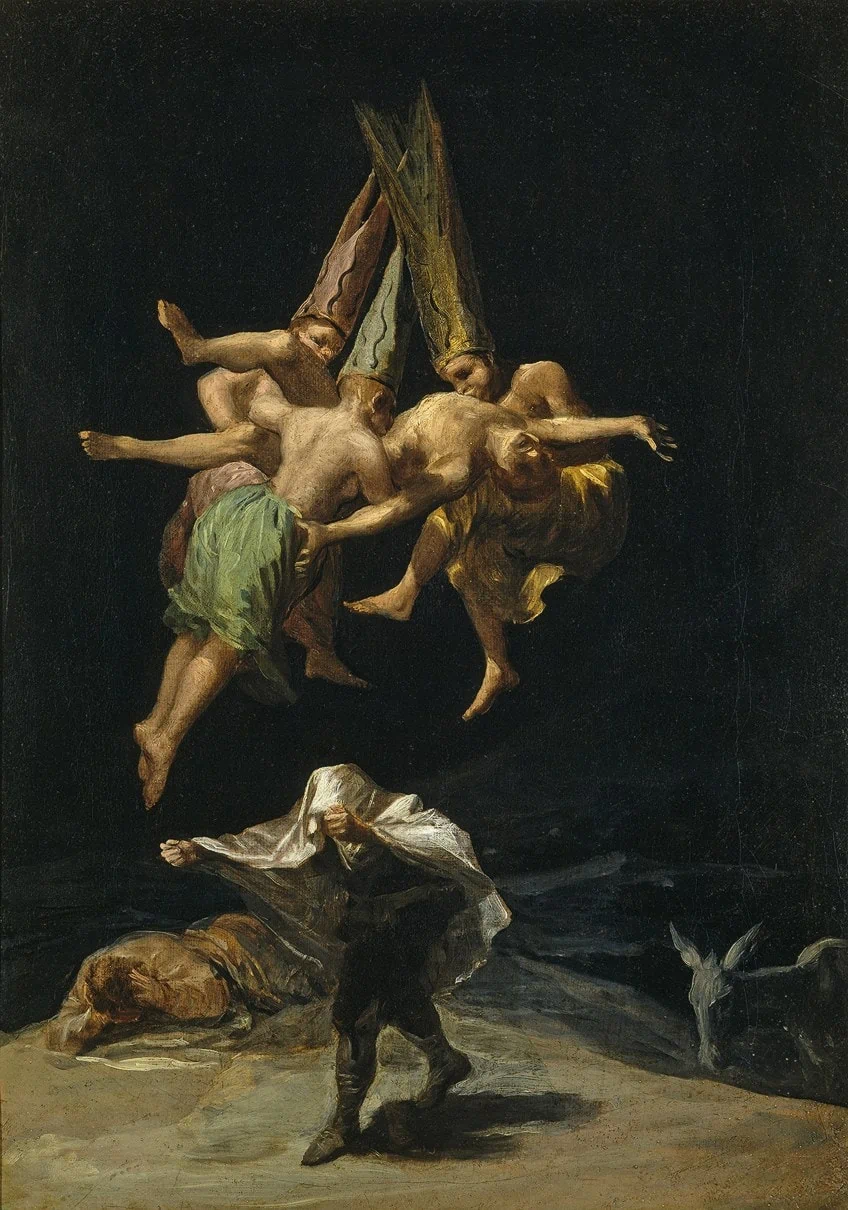
In the 1700s, there was a revival of dark paintings. That is because once again the world was in turmoil. Europe and North America were ravaged by revolution and war. Industrialization had begun, along with all the horrors that accompanied it. Once again people sought solace in art. During this time, vanitas was a prominent art genre.
Vanitas paintings were still lifes containing skulls and other symbols of death accompanied with gold, jewels, and similar luxury goods. They were a reminder of one’s mortality as well as that material wealth means nothing once you are dead.
The periods discussed above are well known for their dark paintings. However, it seems that whenever the world experiences a spell of violence, disease, or suffering scary artwork comes to the forefront. Not to mention that people battle with their own personal demons every day. For that reason, artists will likely continue to produce scary paintings almost indefinitely.
Why Do We Enjoy Scary Artwork?
Why do we get such a thrill out of things that scare us? According to science, the reason we enjoy horror is physiological. Fear is a sensation that we experience when our brain detects possible danger. This causes our bodies to release adrenaline to aid our fight or flight response.
When we watch a scary movie, read a frightening novel, or view a creepy painting, fear causes our body to react.
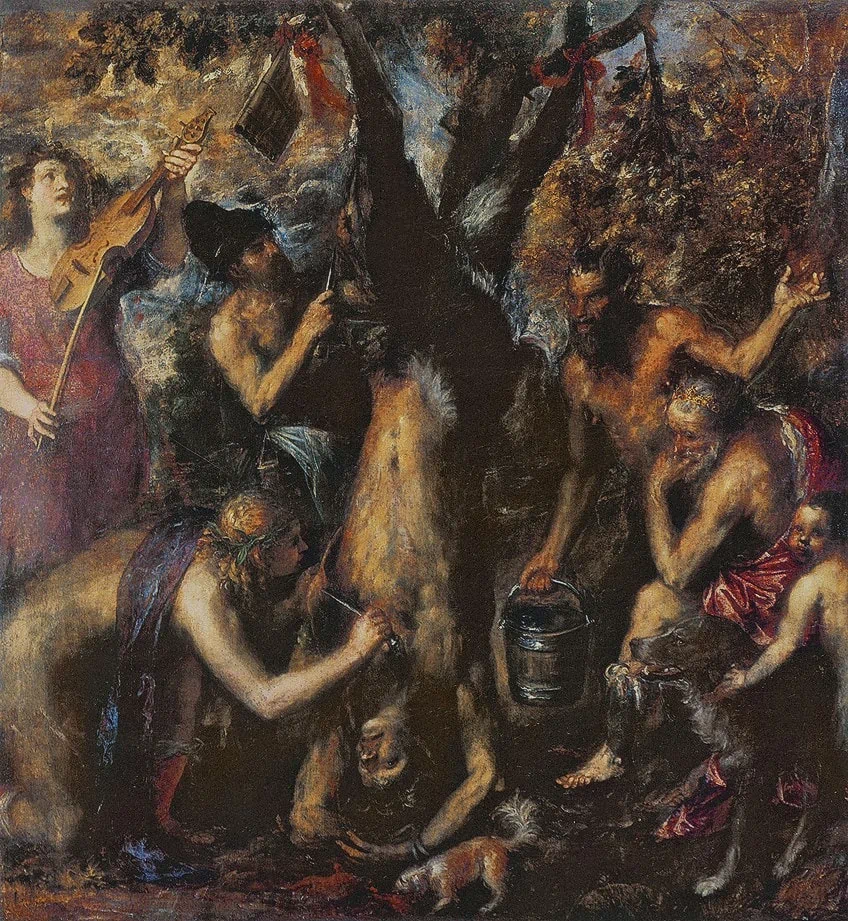
However, our brain quickly realizes there is no real danger and we are left with the adrenaline and endorphins minus the fear. This gives us a rush similar to that of a rollercoaster. This rush can be highly addictive. So, do artists create horror paintings to evoke an adrenaline rush in their audiences?
It’s possible, but it’s more likely that they create this scary art in order to explore their own fears.
The purpose of their art may be an effort to deal with a traumatic experience, acknowledge the darker side of human nature, or even as a memento mori. Whatever the case may be, one thing is certain and that is that things that disturb you grab your attention whether you want them to or not.
The 15 Most Famous Scary Paintings
As mentioned above, each artist has their own reasons for exploring the world of scary art. To get a better understanding of legendary artists, one should turn to their more dark paintings. Therefore, here is a collection of famous scary paintings produced by celebrated artists.
The Garden of Earthly Delights (c. 1500 – 1505) by Hieronymus Bosch
| Artist | Hieronymus Bosch (c. 1450 – 1616) |
| Date Painted | c. 1500 – 1505 |
| Medium | Oil paint on wood |
| Dimensions (cm) | 389 x 220 |
| Where It Is Currently Housed | Museo Nacional del Prado, Madrid, Spain |
| What It Is Worth | Uncertain |
Hieronymus Bosch, originally Jheronimus van Aken, was born in the Netherlands. His exact birth date is uncertain but it is believed his life spanned from around 1450 to 1516. Very few of Bosch’s paintings still survive. However, from those that do, it is clear that he enjoyed creating creepy paintings.
Bosch’s most famous painting was The Garden of Earthly Delights (c. 1500 – 1505).
It is composed of three wooden panels, which make up the painting in its entirety. The first panel depicts an Edenic scene in which God offers Eve to Adam. The second panel showcases a lush garden teeming with couples who frolic and fornicate amongst the flora and fauna. Many are seen picking fruit, a reference to Eve’s ultimate sin.
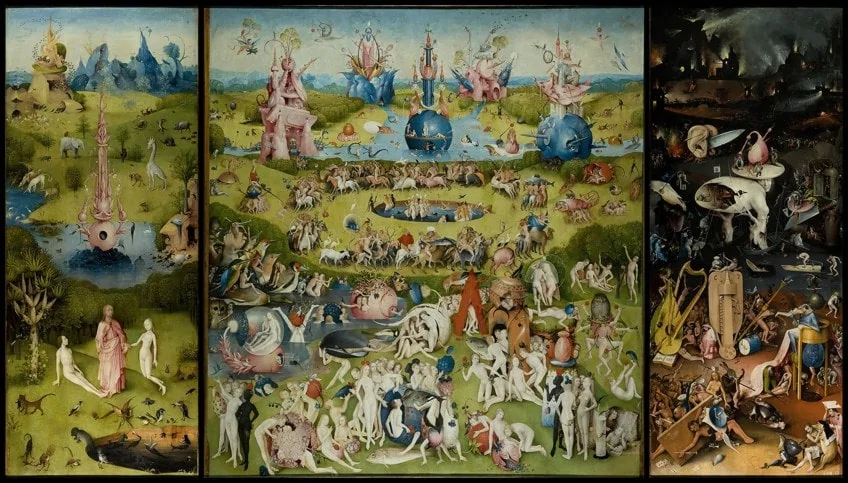
The final panel portrays what happens after all of these sins of the flesh have taken place. A nightmarish hellscape is full of those who indulged in one or more of the seven vices. Bosch showed that he was a noteworthy scary artist by making this third panel truly terrifying and bizarre.
Corpses are strewn everywhere, monstrous creatures are devouring people, and skulls and other body parts float around the painting.
It is believed that The Garden of Earthly Delights was a cautionary tale about the horrors that one can face if one leads an impure life in the eyes of the Christian faith. The painting is intended to shock and dismay to convey this message and make sure that it is remembered. Bosch clearly achieved this as it is still something that horrifies audiences today.
Medusa (1597) by Caravaggio
| Artist | Caravaggio (1571 – 1610) |
| Date Painted | 1597 |
| Medium | Oil on canvas mounted on wood |
| Dimensions (cm) | 60 x 55 |
| Where It Is Currently Housed | Uffizi Gallery, Florence, Italy |
| What It Is Worth | Estimated at $20 million |
Michelangelo Merisi da Caravaggio was a renowned Italian artist who lived between 1571 and 1610. He participated in the Renaissance and Baroque art movements. He is known for his many paintings depicting legends of Greek and Roman mythology. Some of his most famous paintings include Narcissus (c. 1597), Medusa (1597), and Judith Beheading Holofernes (c. 1598).
Medusa is one of Caravaggio’s darkest paintings. It displays the equally gruesome Greek myth of Medusa and Perseus.
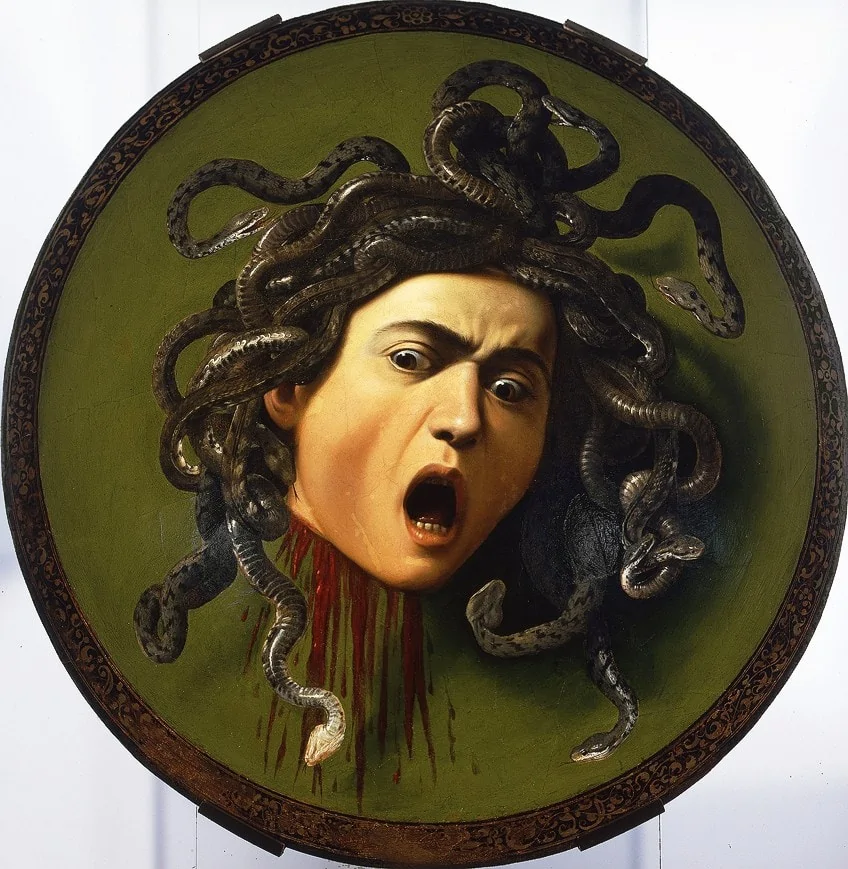
In the myth, Medusa starts as a beautiful young woman. Athena, the goddess of war, was jealous of her beauty and thus turns her into a gorgon. Gorgons were women with snakes for hair who could turn men to stone just by looking at them. In the legend, Medusa is eventually beheaded by the demi-god Perseus.
Caravaggio’s painting really captures the horrors of the Greek myth. In his depiction, the severed head of Medusa is shown still mid-scream.
He adds further symbolism by painting the scary artwork on a round sheet of metal. In the myth, Perseus slays Medusa by looking at her in the reflection of his shield, thus he is not turned to stone by her gaze. It is also believed that Caravaggio used himself as a model for the portrait. Stating mockingly, that he could not be turned to stone by her glances.
The Massacre of the Innocents (1610) by Peter Paul Rubens
| Artist | Peter Paul Rubens (1577 – 1640) |
| Date Painted | 1610 |
| Medium | Oil on canvas |
| Dimensions (cm) | 183 x 142 |
| Where It Is Currently Housed | Art Gallery of Ontario, Toronto, Canada |
| What It Is Worth | $76.7 million |
Sir Peter Paul Rubens was a Flemish artist and ambassador of the Duchy of Brabant in the Netherlands. He is best known for his dramatism and bold use of color. Rubens was a very religious man and often produce allegory paintings inspired by Catholicism. The Massacre of the Innocents (1610) is no exception.
The gory painting is a dramatic depiction of the biblical tale from the book of Matthew. The story takes place just after Jesus Christ was born.
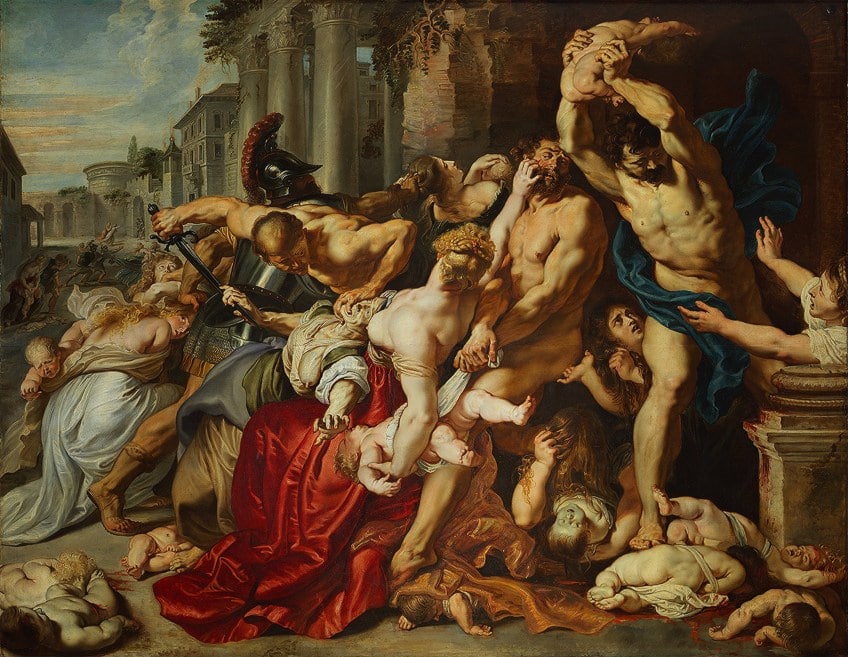
It was believed that Herod the Great was told that the true king of the Jews had been born and would eventually replace him. To prevent getting usurped he ordered the killing of all the male babies born in Bethlehem. Ruben’s portrayal of infanticide is as terrifying as it is heartbreaking.
It was believed that the violent scene of mothers trying to protect their babies from Herod’s soldiers was inspired by the hopelessness Ruben felt surrounding the Eight Years’ War, which raged in the Netherlands.
Judith Slaying Holofernes (c. 1614 – 1620) by Artemisia Gentileschi
| Artist | Artemisia Gentileschi (1593 – 1653) |
| Date Painted | c. 1614 – 1620 |
| Medium | Oil on canvas |
| Dimensions (cm) | 158.8 x 125.5 |
| Where It Is Currently Housed | Museo e Real Basco di Capodimonte, Naples, Italy |
| What It Is Worth | Estimated at $6.1 million |
Artemisia Gentileschi was an Italian artist whose life spanned from 1593 to 1653. In recent years she has gained a great deal of attention and respect due to the success she was able to achieve during her life. During this time, women were not afforded the same opportunities as men. Thus, Gentileschi had to display an immense talent to prove herself in a male-dominated world.
She was also the first woman to ever become a member of the famous Accademia di Arte del Disegno.
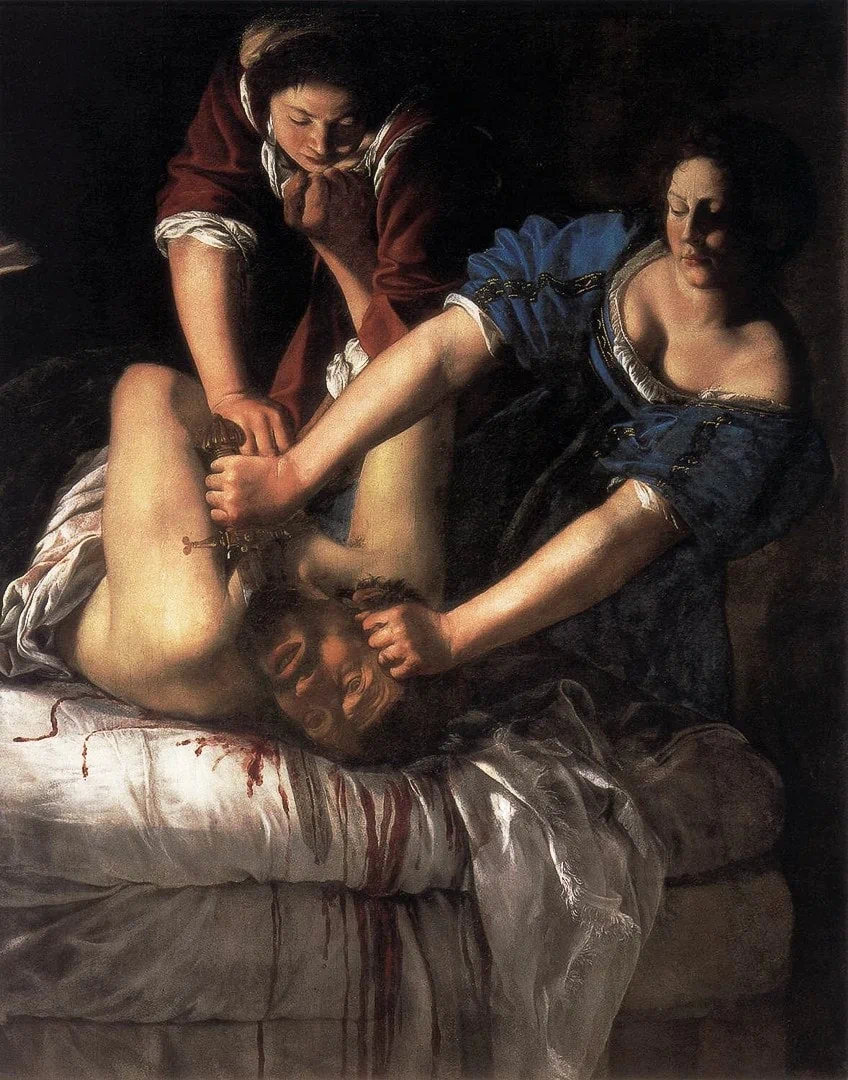
Gentileschi’s painting tells the popular biblical tale of Judith and Holofernes. In the story from the Old Testament, Holofernes is an evil Assyrian general planning to overthrow the town of Bethulia. Judith is a beautiful young Jewess who resolves to save her city. She does this by getting him drunk and seducing him. While he is distracted, she seizes her chance and beheads him, thus saving her city.
The story of Judith and Holofernes is one that many artists have explored. The message that even the vulnerable can defeat their persecutors with God on their side is particularly relevant in Florence as a symbol of its conflict with the Medici family.
What makes Gentileschi’s rendition particularly dark is that Holofernes is said to be modeled off of Agostino Tassi, a man who was said to have sexually assaulted the artist when she was a young woman.
The Nightmare (1781) by Henri Fuseli
| Artist | Henry Fuseli (1741 – 1925) |
| Date Painted | 1781 |
| Medium | Oil on canvas |
| Dimensions (cm) | 101.6 × 127 |
| Where It Is Currently Housed | Detroit Institute of Arts, Detroit, Michigan |
| What It Is Worth | $3 – 4 million |
Henri Fuseli was a Swiss painter who lived in the period between 1741 and 1925. He was a Romantic painter known for his scary paintings and frequent exploration of creepy themes. Although The Nightmare (1781) is his most famous horror painting, he created many more that are just as frightening.
These include The Night-Hag Visiting Lapland Witches (1796) and Lady Macbeth Seizing the Daggers (1812).

The focal point of The Nightmare is a woman in slumber with an incubus perched on her chest. A blind black mare stares vacantly at the scene. The whole thing is a bizarre and confusing nightmare, which is exactly what Fuseli wished to achieve.
The Nightmare is simply meant to be looked at and puzzled over, not understood. Fuseli created the painting purely with the intention of disturbing his audiences.
Severed Heads (c. 1810) by Théodore Géricault
| Artist | Théodore Géricault (1791 – 1824) |
| Date Painted | c. 1810 |
| Medium | Oil on canvas |
| Dimensions (cm) | 61 x 50 |
| Where It Is Currently Housed | National Museum, Stockholm, Sweden |
| What It Is Worth | Uncertain |
Théodore Géricault was born in 1791 and died in 1824 at the young age of 32. The French artist had had a terrible horse-riding accident as a youth, which caused complications for the rest of his life. Although his life was short, he managed to achieve some remarkable things during that time.
He is best known for the famous shipwreck painting, Raft of the Medusa (c. 1818).
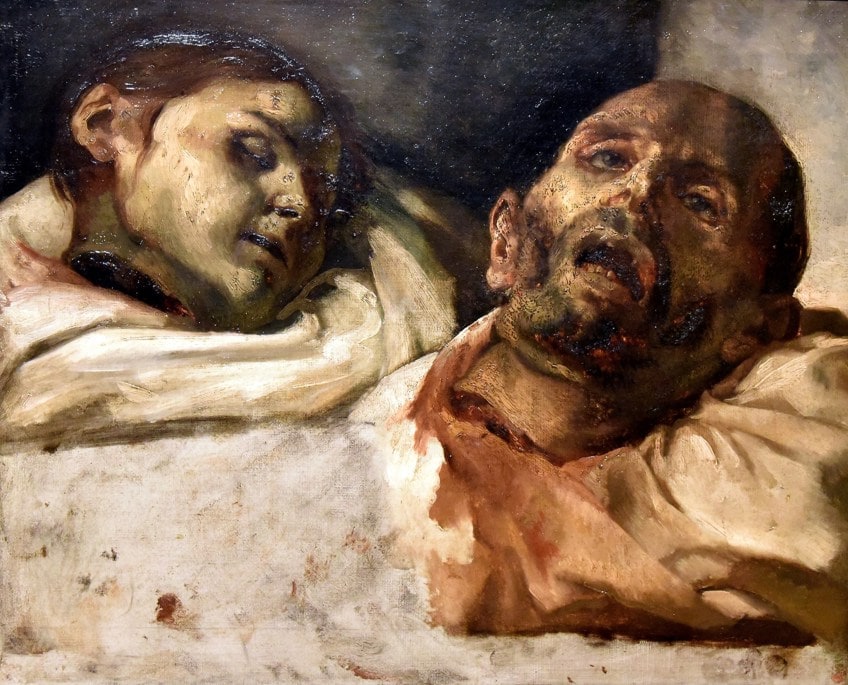
Géricault struggled with maladies caused by an accident for a great deal of his life. This made him obsessed with the notion of mortality. It is said that he kept medical cadavers and body parts preserved in formaldehyde in his studio. For this reason, Severed Heads (c. 1810) is said to have been a study in an attempt to perfect painting corpses.
As creepy as this may seem, it certainly allowed him to paint hauntingly realistic corpses in the celebrated Raft of the Medusa.
The Ghost of a Flea (c. 1819 – 1820) by William Blake
| Artist | William Blake (1757 – 1827) |
| Date Painted | c. 1819 – 1820 |
| Medium | Tempera with gold on wood |
| Dimensions (cm) | 21.4 x 16 |
| Where It Is Currently Housed | Tate Gallery, London, England |
| What It Is Worth | Uncertain |
You most likely know William Blake as an English poet who lived between 1757 and 1827. Although Blake was famous for his poetry, especially his anthology Songs of Innocence and Experience (1789), he also created some fairly famous paintings.
Blake was a controversial figure during his time, particularly due to his vocal support of the French Revolution.
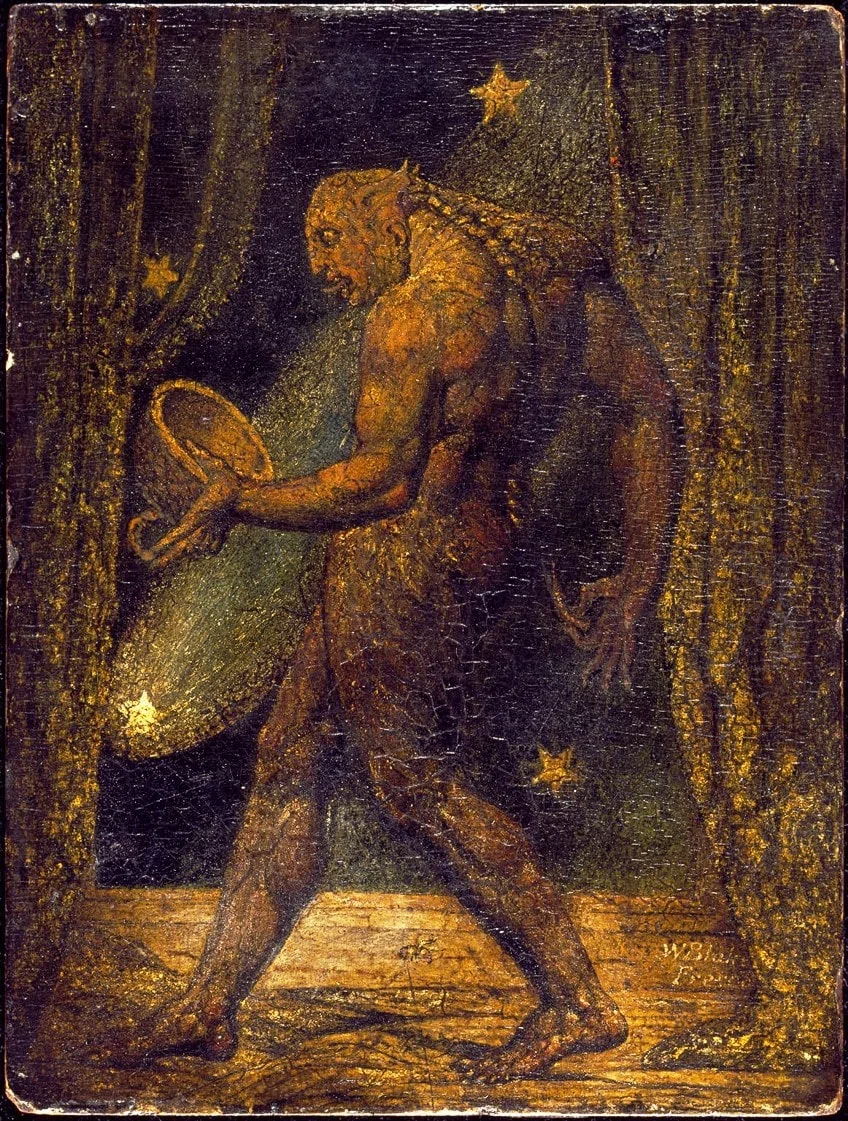
However, his paintings caused a stir as well. He often created bizarre and creepy paintings, which The Ghost of a Flea (c. 1819) is no exception. In The Ghost of a Flea, a strange reptilian monster is the focal point. He carries a large bowl with him, which is meant to hold human blood.
Blake apparently saw the creature in a dream and it told him that all fleas have these ruthless beasts inside of them.
Saturn Devouring His Sons (c. 1819 – 1823) by Francisco Goya
| Artist | Francisco Goya (1746 – 1828) |
| Date Painted | c. 1819-1823 |
| Medium | Mixed media mural transferred to canvas |
| Dimensions | 143.5 cm × 81.4 cm |
| Where It Is Currently Housed | Museo del Prado, Madrid, Spain |
| What It Is Worth | Estimated at $7.4 million |
Francisco Goya was a famous Spanish artist who lived in the period between 1746 and 1828. His most famous painting is The Third of May 1808 (1814), which shows one of the mass executions carried out during the Napoleonic Wars. The horrors that Goya witnessed during this time left him haunted, which is clearly evident in his art.
Saturn Devouring His Son (c. 1819) depicts the Roman myth, which says that the titan Saturn was told that one day his son would usurp his throne.
Saturn Devouring His Son (c. 1819 – 1823) by Francisco de Goya, located in the Museo del Prado in Madrid, Spain; Francisco de Goya, Public domain, via Wikimedia Commons
To prevent this from happening he would devour his children as soon as they were born. However, his wife managed to save one child named Jupiter who would go on to fulfill the prophecy. Saturn Devouring His Son is one of Goya’s renowned Black Paintings. These were murals he painted on the walls of his home during a time when he had removed himself from society.
It is believed that he created the painting as a reflection of the Spanish government, which he thought to be violent and power hungry.
Dante and Virgil (1850) by William- Adolphe Bouguereau
| Artist | William- Adolphe Bouguereau (1825 – 1905) |
| Date Painted | 1850 |
| Medium | Oil on canvas |
| Dimensions (cm) | 281 x 225 |
| Where It Is Currently Housed | Musée d’Orsay, Paris, France |
| What It Is Worth | Uncertain |
William was a French artist who was born in 1825 and died in 1905. He was an academic painter who painted primarily scenes from Greek and Roman mythology. Dante and Virgil (1850) is the only scary artwork he created, which leads one to believe the macabre just was not for him.
In Dante and Virgil, we see the famous poet Dante along with the Roman legend Virgil visiting the eighth circle of hell.

One can find sinners who have committed various types of fraud here. Two such sinners are Cappocchio the non-believer and Gianni Schicchi the deceiver. They are engaged in a dramatic battle showing that those that are banished to hell become more beast than man.
The Skull of a Skeleton with Burning Cigarette (c. 1885 – 1886) by Vincent van Gogh
| Artist | Vincent van Gogh (1853 – 1890) |
| Date Painted | c. 1885 – 1886 |
| Medium | Oil on canvas |
| Dimensions (cm) | 32 x 24.5 |
| Where It Is Currently Housed | Van Gogh Museum, Amsterdam, the Netherlands |
| What It Is Worth | Uncertain |
Vincent van Gogh needs little introduction. The iconic Dutch Impressionist was born in 1853 and died in 1890 at the age of 37. His famous works are countless and include Self-Portrait With Bandaged Ear (1889) and Starry Night (1889).
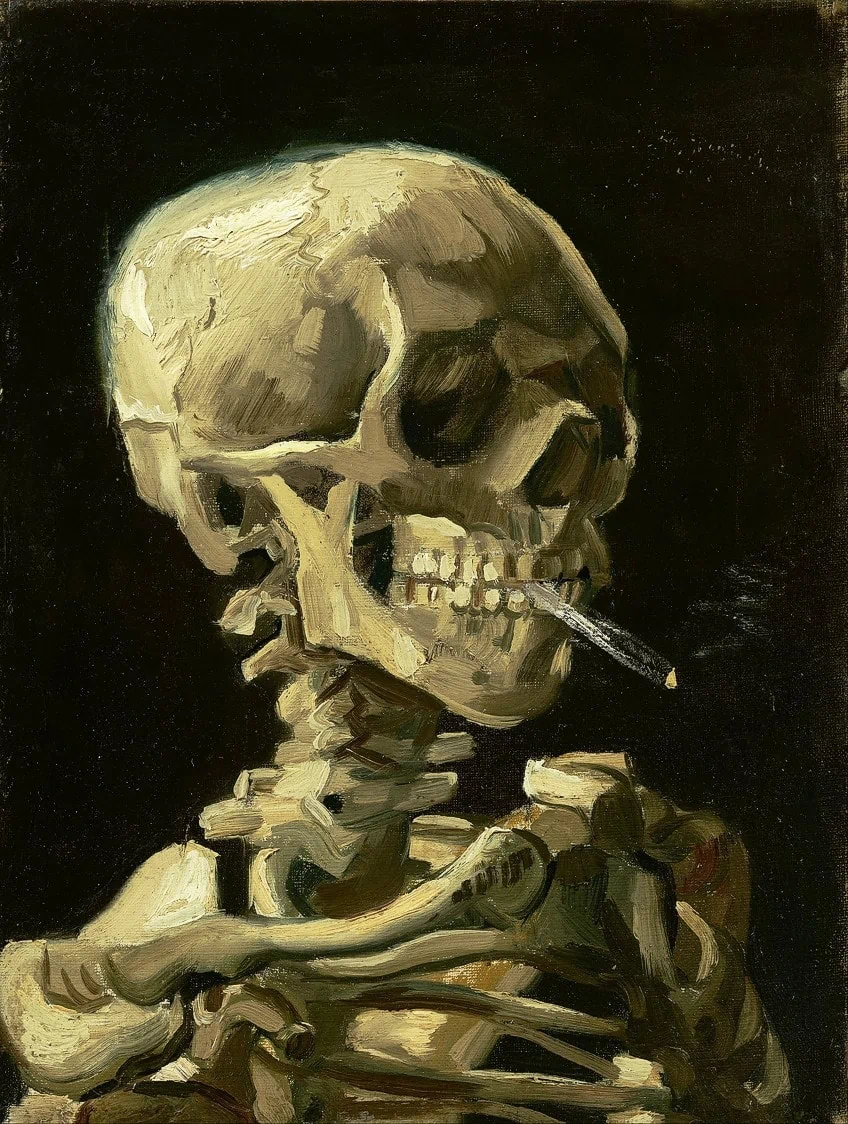
There is much speculation as to the message of The Skull of a Skeleton With Burning Cigarette (c. 1885). It was painted whilst Van Gogh studied art in Antwerp, Belgium, so some believe it to be simply an anatomical study. Others believe it to be a light-hearted warning about the dangers of smoking.
Another opinion is that it is a commentary on Van Gogh’s declining mental state.
The Scream (1891) by Edvard Munch
| Artist | Edvard Munch (1863 – 1944) |
| Date Painted | 1891 |
| Medium | Oil, tempera, and pastel on cardboard |
| Dimensions (cm) | 91 x 73.5 |
| Where It Is Currently Housed | National Gallery, Oslo, Norway |
| What It Is Worth | $119.9 million |
Edvard Munch is one of the most famous scary artists in the history of art. He lived in Norway between 1863 and 1944. Whilst The Scream (1891) is his most well-known painting, he explored several other distressing subjects in paintings such as Anxiety (1894) and Separation (1896). Munch stated that The Scream was inspired by something he experienced personally.
Whilst walking near the fjords at sunset, he felt an overwhelming panic and believed that he heard a shriek.

He painted The Scream as a way of processing this feeling. For this reason, The Scream has come to be known as an embodiment of Munch’s anxiety. He struggled with numerous mental illnesses throughout his life, likely exacerbated by the loss of his mother and sister when he was very young.
This meant that he was raised by his father, who was said to be highly critical and verbally abusive towards the artist.
Pyramid of Skulls (1901) by Paul Cézanne
| Artist | Paul Cézanne (1839 – 1906) |
| Date Painted | 1901 |
| Medium | Oil on canvas |
| Dimensions (cm) | 45.5 x 37 |
| Where It Is Currently Housed | Grand Palais, Paris, France |
| What It Is Worth | Uncertain |
The French Impressionist Paul Cézanne was born in 1839 and died in 1906. He is best known for revolutionizing still life painting by introducing the multi-viewpoint technique. The invention of this technique even caused some to start calling him the Father of Modern Art.
One of his most famous still lifes was Still Life with Peaches and Pears (c. 1885).

Also a still life, Pyramid of Skulls (1901) is much darker than the majority of Cézanne’s others. Pyramid of Skulls is said to be inspired by the memento mori, a common theme in the art of the 1700s. Cézanne began to explore the theme of death in his old age, likely trying to process his own mortality.
Pyramid of Skulls is one of many horror paintings Cézanne painted during this period of his life.
Girl With Death Mask (She Plays Alone) (1938) by Frida Kahlo
| Artist | Frida Kahlo (1907 – 1954) |
| Date Painted | 1938 |
| Medium | Oil paint on metal |
| Dimensions (cm) | 15 x 11 |
| Where It Is Currently Housed | Nagoya City Art Museum, Nagoya, Japan |
| What It Is Worth | Uncertain |
Mexican icon Frida Kahlo was born in 1907 and died in 1954. She was famous for her unique and thought-provoking paintings, which she executed using bold color schemes. Many of her paintings were emotive and conceptual. Although Girl With Death Mask (She Plays Alone) (1938) is both of those things it is certainly more of a scary painting than her others.
In Girl With Death Mask, a little girl is pictured wearing a Día de Los Muertos-style mask.
This infuses the painting with Kahlo’s Mexican heritage and is not what makes it creepy. Rather it is the barren landscape and the demonic mask next to the little girl. The painting is believed to be a self-portrait, which was painted shortly before Kahlo’s divorce from Diego Rivera.
It expresses how sad and alone she felt in the marriage.
The Face of War (1940) by Salvador Dalí
| Artist | Salvador Dalí (1904 – 1989) |
| Date Painted | 1940 |
| Medium | Oil on canvas |
| Dimensions (cm) | 79 x 64 |
| Where It Is Currently Housed | Museum Boijmans Van Beuningen, Rotterdam, the Netherlands |
| What It Is Worth | Uncertain |
Salvador Dalí was a famous Spanish Surrealist artist who lived between 1904 and 1989. He is an internationally acclaimed artist, with many recognized paintings such as The Persistence of Memory (1931) and The Temptation of St Anthony (1946). His individuality and offbeat art style have given him legendary status and his name will always be synonymous with the Surrealist movement.
Dalí lived through three major wars in his lifetime, World War I, World War II, and the Spanish Civil War.
Each of these resulted in mass fear and suffering. The Face of War (1940) is said to be Dalí’s way of expressing his sadness about the Spanish Civil War. A corpse’s face, which has even more deathly faces in its mouth and eye sockets shows that violence is never-ending during times of war.
The Face of War is highly disturbing and carries a strong political statement.
Big Electric Chair (1967) by Andy Warhol
| Artist | Andy Warhol (1928 – 1987) |
| Date Painted | 1967 |
| Medium | Acrylic and silkscreen ink on linen |
| Dimensions (cm) | 185.4 x 137 |
| Where It Is Currently Housed | Froelich Collection, Stuffgart, Germany |
| What It Is Worth | $4.5 million |
The celebrated Pop artist Andy Warhol was born in America in 1928. He achieved widespread success for his art before his death in 1987. His popular works such as Campbell’s Soup Cans (1962) and Shot Marilyns (1964) are still raved about today. Big Electric Chair (1967) was part of Warhol’s Death and Disaster series.
He gained inspiration for the painting from a real photograph of an electric chair that he saw in the newspaper.
It struck him that because we are confronted with horrible things in the news every day, we have become desensitized to death and violence. Thus, he did not think that his audiences would be too phased by the dark subject matter of his painting.
There are a number of reasons artists might dabble in darker subject matter. Some may wish to make a political statement or maybe work through emotions they cannot fully understand. Others may explore the macabre to come to grips with the fact that death awaits us all. Whatever the case may be, the above famous scary paintings are certainly magnificent works of art, even if they are pretty spooky.
Frequently Asked Questions
What Is Considered the Scariest Painting in Art History?
Many believe that The Nightmare (1781) by Swiss artist Henri Fuseli is the scariest painting in art history. This is due to the confusing and sinister nature of the painting. We are often scared most by the things that we cannot explain and this painting exemplifies that notion. At the time of its release, nothing like it had been seen before. In addition to this, it carried sexual connotations, which was very shocking and unacceptable at the time.
Is Dark Art the Same Thing As Scary Art?
The terms dark art and scary art are used synonymously. They both refer to a genre of painting, which has key creepy characteristics. Often works of art classified as dark or scary art will contain morbid and often supernatural subject matter. Memento mori objects such as skulls, hourglasses, and moths are also very common in dark art. Finally, they are commonly painted using dark color schemes such as black, brown, gray, and red.
Who Are Some of the Most Famous Scary Artists
Very few artists create scary art exclusively. However, some artists have a preference for the darker subject matter. Others have only painted a few works of scary art, yet these have become their most famous paintings. When looking up scary art, you will most likely come across artists like Hieronymus Bosch, Caravaggio, Henri Fuseli, and Francisco Goya.
Jordan Anthony is a Cape Town-based film photographer, curator, and arts writer. She holds a Bachelor of Art in Fine Arts from the University of the Witwatersrand, Johannesburg, where she explored themes like healing, identity, dreams, and intuitive creation in her Contemporary art practice. Jordan has collaborated with various local art institutions, including the KZNSA Gallery in Durban, the Turbine Art Fair, and the Wits Art Museum. Her photography focuses on abstract color manipulations, portraiture, candid shots, and urban landscapes. She’s intrigued by philosophy, memory, and esotericism, drawing inspiration from Surrealism, Fluxus, and ancient civilizations, as well as childhood influences and found objects. Jordan is working for artfilemagazine since 2022 and writes blog posts about art history and photography.
Learn more about Jordan Anthony and about us.
Cite this Article
Jordan, Anthony, “Famous Scary Paintings – Explore Art’s Most Creepy Paintings.” artfilemagazine – Your Online Art Source. August 8, 2022. URL: https://artfilemagazine.com/famous-scary-paintings/
Anthony, J. (2022, 8 August). Famous Scary Paintings – Explore Art’s Most Creepy Paintings. artfilemagazine – Your Online Art Source. https://artfilemagazine.com/famous-scary-paintings/
Anthony, Jordan. “Famous Scary Paintings – Explore Art’s Most Creepy Paintings.” artfilemagazine – Your Online Art Source, August 8, 2022. https://artfilemagazine.com/famous-scary-paintings/.


